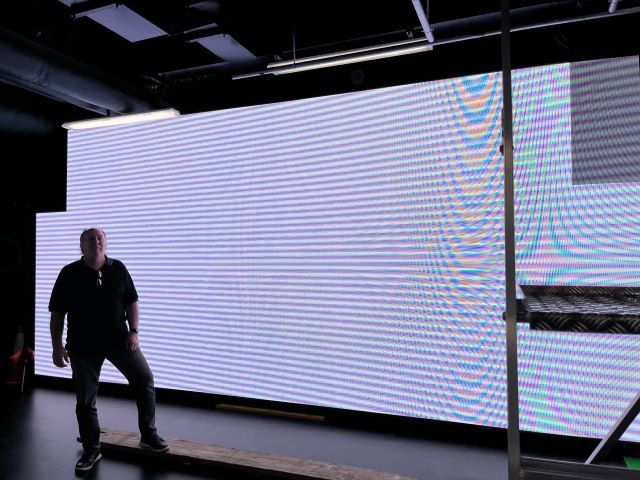SIT's Liantronics LED Virtual Production Wall a First in NZ Education
SIT recently received a new piece of technology which has been two years in the planning. On Thursday 26th and Friday 27th of January, an LED virtual production wall was installed at Te Rau o te Huia Centre for Creative Industries; the two-day installation required a specialist crew from Intraware and Protel, flown in from Wellington and Australia.
The Liantronics Pilot LED is the first LED virtual wall to be installed in an educational institute in New Zealand and only the second in Australasia (there is one in Canberra). Rachel Mann, Screen Arts Programme Manager at SIT School of Screen Arts, says the virtual wall is the latest technology in visual effects and filmmaking. “It’s the convergence between the filmmaking and gaming worlds”, describing it as “a very, very, high powered LED screen”, but in another league to home entertainment. “It’s not your telly at home,” she added.
SIT already has green screen capabilities; this is a step up in technology from that. “It’s the same type of technology they use in filming productions like the Mandalorian series,” said Ms Mann.
“We build the 3-D [imaginary] world in a gaming engine, which is projected onto the LED virtual screen - actors can be placed on it – it composites the person into the virtual world.”
The main difference between the LED virtual wall and green screen is that the wall displays its effects, like backgrounds of epic landscapes, in real-time during filming, which allows them to be created in pre-production, rather than being added afterwards in post-production.
It has been described as the future of filmmaking because it means more content can be created in the studio, reducing the need for filming on location. The computer-generated scenery is combined with the actors performing and set props, continuously marrying these elements together so it all looks natural. The wall captures camera movement and allows users to move everything around as it happens. It also works in conjunction with SIT’s other motion capture suites, allowing students to put together full virtual productions.
Four SIT staff received training from the installers while they were in Invercargill on both the support of the Pilot panels as well as the Aximmetry real-time compositing software that compiles the camera tracking and 3D content. “We’ve had quite a bit of training,” said Ms Mann. “We tested it last week and it does more than we thought it would do – we’re pretty stoked and amazed [with its capabilities] and that was on the first day...”
 |
 |
The Liantronics Pilot LED will be used by students in all strands of the Bachelor of Screen Arts programmes. “We are able to train students on the traditional green screen as well as the latest virtual production pipelines. It means we can do lots of collaborative projects with all our students involved,” Ms Mann added.
Wayne Morphew from Intraware said “SIT is the 2nd school in ANZ to choose Liantronic Pilot panels for their Virtual Production classes after AIE in Australia. The Pilot is the best value for money when you are looking for high-end colour gamut for film and drama work as the Pilot has been built from the ground up for virtual production work as opposed to the competition that is geared towards live events so carries a lot of extra baggage for that and additional cost. With Liantronics Pilot we focus on high frame rates and Colour space so are close to REC 2020.”
The substantial investment had been planned for the last two years for placement in the new centre for creative industries; it couldn’t have been accommodated at the old facility in Don Street, Ms Mann explained.
SIT staff were excited about introducing it to students when classes commenced on Monday 13th February. “It’s ours, it’s in situ full-time, and we’re ready to roll,” said Ms Mann, who is thrilled to see the planning for SIT’s ongoing policy of leading state-of-the-art teaching come to fruition.
Hamish Small, Head of Faculty - New Media, Arts, Business and Computing, said SIT has always looked to prepare students to meet the contemporary needs of industry. “This new addition and initiative emphasise our commitment in being a lead within New Zealand’s tertiary vocational education environment, along with supporting and collaborating with our community and associated industries.”


